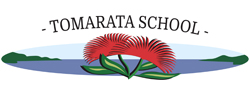Mathematics
What is Mathematics and Statistics about?
Mathematics is the exploration and the use of patterns and relationships in quantities, space and time. Statistics is the exploration and use of patterns and relationships in data. These two are related, but use different ways of thinking and solving problems. Mathematics and statistics use symbols, graphs and diagrams to find and communicate patterns and relationships and create models to represent both real life and hypothetical situations.
How is Mathematics and Statistics structured in the New Zealand Curriculum?
Mathematics and Statistics consist of three strands:
Number and Algebra | Involves calculating and estimating, using appropriate strategies and methods in flexible ways. Algebra involves understanding patterns and relationships found in numbers shapes and measures.
Geometry and Measurement | Geometry involves recognising properties and symmetries of shapes and describing position and movement. Measurement involves using appropriate units to predict and calculate.
Statistics | involves solving problems using appropriate data, designing investigations, collecting data, finding relationships and trends and communicating findings.
How is Mathematics and Statistics taught at Tomarata School?
At Tomarata School we will provide coverage of Mathematics and Statistics using the New Zealand Curriculum for Year 1-8, using a problem solving approach. We will provide a balanced needs based programme of contextual problem solving activities , alongside targeted workshops for student needs, using the school wide mathematics plan.
- Teaching and learning will be supported by shared learning intentions
- Appropriate teaching and learning resources, equipment and games will guide and enhance the teaching and learning of Mathematics and Statistics
- We will provide a balanced programme that addresses student needs, builds on prior knowledge and provides opportunities to use new learning with other real life contexts and/or learning areas
- Students will be accurately assessed and taught to meet their learning needs at the appropriate level
- At risk students are identified and are provided with appropriate support and acceleration
- All classes will have enriching and productive learning environments with established routines and expectations
The Tomarata School Mathematics programme will:
- Be delivered a minimum of four times per week
- Be linked to other learning areas where appropriate
- Provide time for new learning, practice and consolidation of knowledge and strategies
- Integrated practical (“hands on”), authentic and relevant contexts where appropriate
Best practice in Mathematics and Statistics at Tomarata School
Teachers will:
- Place an emphasis on the teaching and learning of Number and Problem Solving
- Show evidence of current teaching practices
- Use appropriate resources and equipment at all levels
- Provide a range of practical (“hands on”), authentic and relevant experiences within all Mathematical strands
- Allow students time to reflect on, and consolidate what they have learnt in Mathematics and Statistics
- Be guided by Numeracy and problem solving teaching models
- Provide opportunities for students to present and communicate new learning in a variety of ways
- Incorporate ICT, questioning and thinking skills to support and extend learning
- Develop and display specific learning intentions, success criteria and student work to enhance student understanding
- Provide opportunities for students to celebrate their learning in Mathematics
How do we Assess and Report Mathematics and Statistics at Tomarata School
Data will be gathered and analysed to ensure we are meeting the individual needs of all students.
Data analysis will inform:
The setting and monitoring of school-wide, class, target group or individual targets
- Reporting to Parents and the Board of Trustees
- Student Groupings
- Students “At Risk” or “Well Above” expectations
- Planning
- Next step learning
- Student’s goals
Mathematics and Statistics information will:
- Provide evidence to guide future teaching and learning
- Be shared with students and parents honestly
- Include assessment in a variety of forms (National Standardised Testing, (eg PAT) Pre & Post Tests, OTJ – Overall Teacher Judgments, Peer and Self Assessments, Formative and Summative)
- Be collected, collated and analysed by teachers and be kept in teacher records, student books and electronically (HERO)

